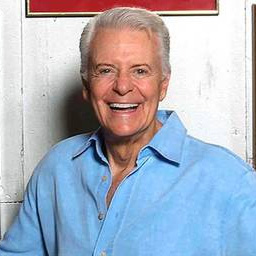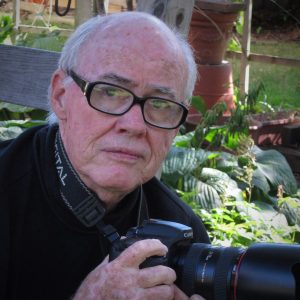The Light Crust Doughboys
The Light Crust Doughboys are The State of Texas’ Official Music Ambassadors named by the 74th Texas Legislature, are Texas Commission on the Arts’ Official Touring Artists, and are inductees in the Texas Cowboy, Texas Western Swing, Rockabilly, Texas Music, and Cowtown Society of Western Music Halls of Fame.
Led by Grammy Award-Winning artist and producer, Art Greenhaw on bass, guitar, piano and vocals, The Light Crust Doughboys star virtuoso instrumentalists and singers: Dion Pride (son of Charley Pride) vocals, guitar and keyboards, Grammy Award-Winning violinist Jim Baker who also sings and plays banjo; Marek Eneti electric violinist; Randy Wills (5th generation descendant of Bob Wills) on keyboards and bass; and Doughgirl, Teresa Anderson on vocals. A Light Crust Doughboys brass and reed ensemble can be added for select events, concerts, weddings and balls.
The Light Crust Doughboys have played prestigious festivals throughout the United States, have toured Austria, and make frequent television appearances.
The Light Crust Doughboys, founded in 1931, have had the greatest and longest success of all the western swing bands in the Fort Worth-Dallas area. The group’s history covers more than three quarters of a century. In 1929 James Robert (Bob) Wills moved from West Texas to Fort Worth and formed the Wills Fiddle Band, a rather unimposing aggregation made up of Wills as fiddler and Herman Arnspiger as guitarist. In 1930 Milton Brownqv joined the band as vocalist, and in 1931 the Wills Fiddle Band—Wills, Arnspiger, and Brown—became the Light Crust Doughboys.
With help from friends and fans in Fort Worth, Wills persuaded Burrus Mill and Elevator Company to sponsor the band on a radio show by advertising the mill’s Light Crust Flour. After two weeks of broadcasts, W. Lee O’Daniel, general sales manager of Burrus Mill, canceled the show because he did not like their “hillbilly music”. However, a compromise, inspired by Wills’s persistence and the demands of thousands of fans who used Light Crust Flour, brought the group back to the air in return for its members’ agreement to work in the mill as well as perform. People listened at noon each day for a couple of licks on Bob Wills’s fiddle and Truett Kimsey’s enthusiastic introduction: “The Light Crust Doughboys are on the air!”. Then the Doughboys sang their theme song, which began: “Listen everybody, from near and far if you want to know who we are. We’re the Light Crust Doughboys from Burrus Mill.” This went over so well that it became the permanent salutation of the Doughboys.
So impressed was O’Daniel with the band’s following that he became the announcer for the show and organized a network of radio stations that broadcast the Doughboys throughout Texas and most of Oklahoma. The Texas Quality Group Network, formed in 1934, included such radio stations as WBAP, Fort Worth; WFAA, Dallas; WOAI, San Antonio; KPRC, Houston; and KOMA, Oklahoma City. The show became one of the most popular radio programs in the Southwest.
In 1932 the original Doughboys began leaving the band. Brown left the show that year to form “The Musical Brownies”, and in 1933 O’Daniel had to fire Wills for missing broadcasts, especially because of drinking. In 1933 Wills organized the Playboys in Waco. Of all the early Doughboys, Wills was the most influential. The “Light Crust Doughboys” never departed from the fiddle–band style that Wills established in the band’s formative years.
In October 1933 O’Daniel took a new and talented group of Doughboys to Chicago for a recording session with Vocalion (later Columbia) Records. O’Daniel, who deserves much credit along with Brown and Wills for the initial success of the Doughboys, continued as manager and announcer until the mid–1930s. In 1935, when Burrus Mill fired him after a series of disputes, O’Daniel formed his own band, the “Hillbilly Boys”, and his own flour company, Hillbilly Flour. O’Daniel used this band in his successful bid for the governorship in 1938.
The years between 1935 and World War II were the most successful in the long history of the Doughboys. By 1937 some of the best musicians in the history of western swing had joined the band. Kenneth Pitts and Clifford Gross played fiddles. The rhythm section consisted of Dick Reinhart, guitar; Marvin (Smokey) Montgomeryqv, tenor banjo; Ramon DeArman, bass; and John (Knocky) Parker, piano. Muryel Campbell played lead guitar. At various times, Cecil Brower played fiddle. Almost from the beginning, the Light Crust Doughboys enjoyed a successful recording career; their records outsold those of all other fiddle bands in the Fort Worth–Dallas area. Their popularity on radio had much to do with their success in recording. By the 1940s the Light Crust Doughboys broadcast over 170 radio stations in the South and Southwest. There is no way of knowing how many millions of people heard their broadcasts. Though the Doughboys played good, danceable jazz, the band was basically a show band whose purpose was to entertain. Their shows took the listeners’ minds off the economic problems of the 1930s and added joy to their lives.
In the early months of World War II members of the band went into either the armed forces or war–related industries. In 1942 Burrus Mill ended the Doughboys’ radio show. The mill reorganized the band in 1946, but the broadcasts were never as appealing as they had been in the prewar years. The company tried various experiments and even hired Hank Thompson and Slim Whitman in the hope that somehow the radio show could be saved. By 1950 the age of television had begun, however, and the dominance of radio was over.
With its passing went the radio show that Texans had enjoyed since 1931. The Light Crust Doughboys were no longer “on the air.” But the group’s demise was only apparent, for in the 1960s the Doughboys’ music was revived. In 1973 members of the band took part in the last recording session for Bob Wills in Dallas for the album “For the Last Time”. During the following decades leader Smokey Montgomery continued to keep the band going in some form. In the late 1980s the Light Crust Doughboys were the first inductees into the Texas Western Swing Hall of Fame. Throughout the 1990s the Doughboys continued to bring their music to new audiences. Art Greenhaw joined the group; as co-producer he added horns to their sound in 1993, thus bringing about a new type of “country jazz,” influenced by the old swing sound. The Texas legislature declared the Doughboys the “official music ambassadors of the Lone Star State” in 1995.
The band received some national recognition when one of their 1930s jukebox classics, “Pussycat, Pussycat, Pussycat”, written by Montgomery, was featured in the movie Striptease in 1996. By the late 1990s the Doughboys were also recording gospel music with James Blackwood on Greenhaw’s independent record label, based in Dallas. Beginning in 1998 the group performed jointly with the “Lone Star Ballet” in Amarillo, “The Fort Worth Symphony”, the “Dallas Wind Symphony”, the “Abilene Philharmonic”, and other ensembles. They were inducted into the Rockabilly Hall of Fame in 2000 and continued to release material including the CDDoughboy Rock (2000).
After Montgomery’s death in 2001, the Light Crust Doughboys played a fitting tribute at his funeral, held in the Hall of State in Dallas. Art Greenhaw became the band’s leader and producer. The history of the Light Crust Doughboys was chronicled by John Dempsey in his book “The Light Crust Doughboys, Are on the Air: Celebrating Seventy Years of Texas Music”, published in 2002. In 2003 the band won a Grammy for their work on the CD “We Called Him Mr. Gospel Music”, The James Blackwood Tribute Album.
The Light Crust Doughboys, under the leadership of Art Greenhaw, remained very active in the 2000s. Their collaborative work on “Southern Meets Soul: An American Gospel Jubilee” (2005) earned a Grammy nomination for Best Southern, Country or Bluegrass Album. In December 2005 the Light Crust Doughboys Hall of Fame and Museum officially opened in Quitman. The facility displayed exhibits of historic memorabilia of the group as well as hosted live performances. The Light Crust Doughboys were inducted into the Texas Radio Hall of Fame in 2006. The following year their release, Light Crust Doughboys 1936–1941, received enthusiastic reviews from western swing fans. The year 2011 marked eighty years of performances for the Light Crust Doughboys.
BIBLIOGRAPHY:
John Mark Dempsey, The Light Crust Doughboys are on the Air: Celebrating Seventy Years of Texas Music (Denton: University of North Texas Press, 2002). Doughboy Fan (https://www.heroeswest.com/doughboyfan/index.html), accessed October 25, 2011. Art Greenhaw Official International Fan Club (https://www.artgreenhaw.com), accessed October 25, 2011. Bill C. Malone, Country Music U.S.A. (Austin: University of Texas Press, 1968). Charles R. Townsend, San Antonio Rose: The Life and Music of Bob Wills (Urbana: University of Illinois Press, 1976).





